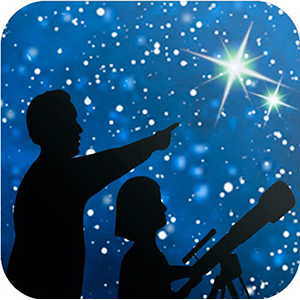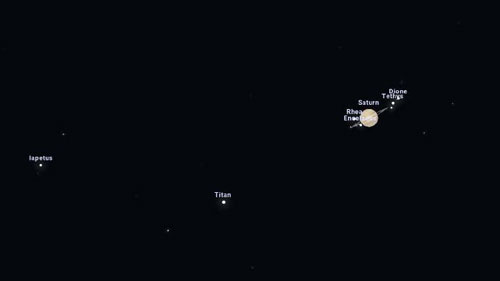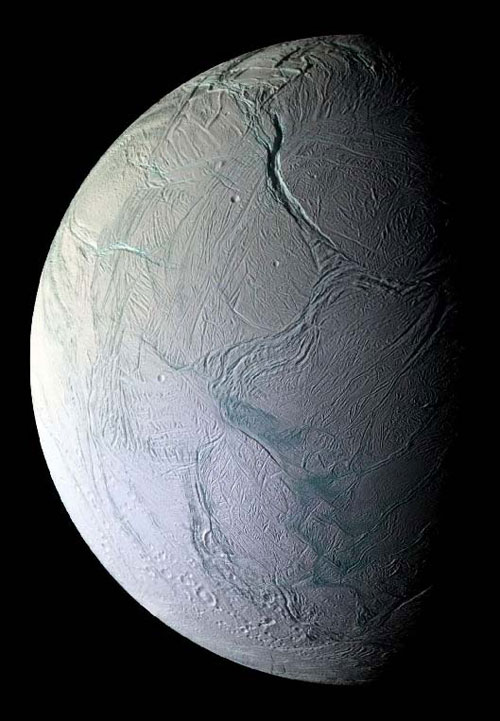NASA's Night Sky Network

September’s Night Sky Notes: Marvelous Moons
By Kat Troche
September brings the gas giants Jupiter and Saturn back into view, along with their satellites. And while we organize celebrations to observe our ownMoon thismonth, be sure to grab a telescope or binoculars to see other moons within our Solar System!We recommend observing thesemoons (and planets!) when they are at their highest in the night sky, to get the best possible unobstructed views.
The More the Merrier
As of September 2024, the ringed planet Saturn has 146 identifiedmoons in its orbit. These celestial bodies range in size; the smallest being a few hundred feet across, to Titan, the second largest moon in our solar system.

LThe Saturnian systemalong with variousmoons around the planet Saturn: Iapetus, Titan, Enceladus, Rhea, Tethys, and Dione.
Credit: Stellarium Web
Even at nearly 900 millionmiles away, Titan can be easily spotted next to Saturn with a 4-inch telescope, under urban and suburban skies, due to its sheer size. With an atmosphere ofmostly nitrogen with traces of hydrogen and methane, Titan was briefly explored in 2005 with the Huygens probe as part of the Cassini-Huygens mission, providing more information about the surface of Titan. NASA’smission Dragonfly is set to explore the surface of Titan in the 2030s.

This mosaic of Saturn'smoon Enceladus was created with images captured by NASA's Cassini spacecraft on Oct. 9, 2008, after the spacecraft came within about 16miles (25 kilometers) of the surface of Enceladus.
Credit: NASA/JPL/Space Science Institute
Saturn’smoon Enceladus was also explored by the Cassini mission, revealing plumes of ice that erupt frombelow the surface, adding to the brilliance of Saturn’s rings.Much like our own Moon, Enceladus remains tidally locked with Saturn, presenting the same side towards its host planet at all times.
The Galilean Gang
The King of the Planetsmight not have the mostmoons, but four of Jupiter’s 95moons are definitely the easiest to see with a small pair of binoculars or a small telescope because they forma clear line. The Galilean Moons – Ganymede, Callisto, Io, and Europa – were first discovered in 1610 and they continue to amaze stargazers across the globe.

The Jovian system: Europa, Io, Ganymede, and Callisto.
Credit: Stellarium Web
- Ganymede: largestmoon in our solar system, and larger than the planet Mercury, Ganymede has its ownmagnetic field and a possible saltwater ocean beneath the surface.
- Callisto: this heavily crateredmoon is the third largest in our solar system. Although Callisto is the furthest away of the Galileanmoons, it only takes 17 days to complete an orbit around Jupiter.
- Io: the closestmoon and third largest in this system, Io is an extremely active world, due to the push and pull of Jupiter’s gravity. The volcanic activity of this rocky world is so intense that it can be seen fromsome of the largest telescopes here on Earth.
- Europa: Jupiter’s smallestmoon also happens to be the strongest candidate for a liquid ocean beneath the surface. NASA’s Europa Clipper is set to launch October 2024 and will determine if this moon has conditions suitable to support life.Want to learn more? Rewatch the July 2023 Night Sky Network webinar about Europa Clipper here.
Be sure to celebrate International Observe the Moon Night here on Earth September 14, 2024, leading up to the super fullmoon on September 17th! You can learnmore about supermoons in our mid-month article on the Night Sky Network page!
